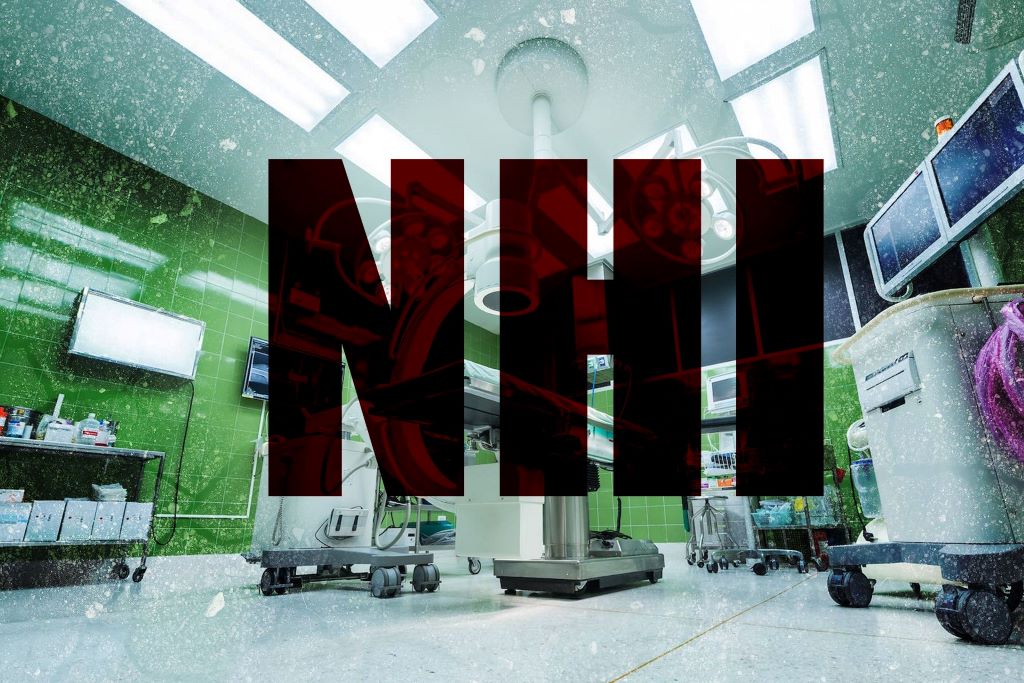Ramaphosa to Sign NHI into Law: What does This Mean for SA Doctors – and Can We Fix It?

President Cyril Ramaphosa has finished “looking for a pen” to sign the National Health Insurance (NHI) bill into law, and is set to approve the legislation on Wednesday, May 15.
While this “electioneering” move comes as a surprise to many, some experts anticipated this timing. With its signing, the legal battles over it will now begin. An array of medical and professional associations are readying their court papers, armed with numerous expert objections and petitions finding fault with the bill, widely criticised as unaffordable, demoralising and disastrous. But what will it look like in the end? Is it in fact an opportunity to fix public and private healthcare for the better?
To understand the NHI bill’s consequences and possible remedies better, Quicknews asked medico-legal specialist Martin Versfeld of Webber Wentzel & Associates about the legal aspects of the NHI bill, what it means for doctors in private practice, what can be done to ensure it fixes SA healthcare instead of damaging it further, and what its likely outcomes will be.
“The inequality of South Africa’s healthcare situation is not lost on anyone, least of all those in healthcare,” Martin says. “I think every healthcare professional, every hospital group, every healthcare provider recognises a need to assist South Africans more generally and to ensure there is better access to healthcare.”
Examination of the NHI bill has shown that it will simply exacerbate the problem, with possible wider consequences for the country’s economy (If Eskom’s load shedding is anything to go by – Ed). Viable alternatives towards repairing the beleaguered public healthcare system have been suggested, but political pressures have seen the bill signed into law. At this point, it is a certainty that it will face a barrage of litigation.
NHI, the mirage on the horizon
While the NHI is now set to be signed into law, there were efforts to persuade President Ramaphosa to not sign it. Recently, a South African Health Care Practitioners (SAHCP) petition was presented that contains a number of points and precedent to other laws that were rejected due to serious concerns. This petition had gathered 23 000 signatures from healthcare professionals.
Martin believes that it is a very effective petition, and it may have ‘resonated’ except for its timing. “The challenge that we face here is that it is an election year,” he points out. So while this petition and other appeals to the President to reject the legislation might have merit, and may have otherwise succeeded, it is extremely unlikely that Ramaphosa could go against his party’s goals.
“The NHI is a centrepiece, arguably, of the ANC’s election manifesto and they will be very reluctant to signal a climb-down at this point. So I think Cyril, as much as he might personally take a view that, under different circumstances, would be appropriate – I think he’d be under enormous pressure simply to sign the legislation into law.”
The time to act, with the most impact, will be after the elections.
As soon as NHI is signed into law, there will be a tidal wave of litigation, predicts Martin. This will be the next best time to challenge it. There are two avenues; whether the entire legislation is struck down as unconstitutional, or when it comes to the nitty gritty of implementation, when “the plethora of regulations are introduced.”
Even absent the court battles that will be waged, it will take years to fully implement NHI. Martin points out the length of the process, “The NHI is not going to be implemented to the full extent of what the legislation provides from the get go,” he says – it simply can’t be.
“It will be introduced incrementally by way of the introduction of regulations. So what I would expect as a first step would be to introduce the infrastructure required in order to create this collective pooling of funds.
“They will also be regulations which empower Nicholas Crisp and others to employ the essential staffing required to start to implement NHI.
“So it’s envisaged that there will be a very long process.”
‘Decades of litigation’
“Once the legislation takes effect, of course, the doctors and other stakeholders, including the medical schemes, will have an opportunity to carefully review the legislation and take a view as to whether or not they wish to, at this juncture, challenge certain aspects of that legislation on the basis of the – amongst other things – lack of constitutionality thereof.”
Martin stresses that the objections that have been lodged and engagements made to-date are not wasted effort. “It’s very important that the court sees and appreciates all the efforts that the industry has made in order to engage practically and meaningfully with the government. If nothing else, it puts the government on the back foot and the healthcare providers on the front foot.”
“This is not a matter which anyone is going to take lying down,” he says.

The South African Medical Association (SAMA) is one of the organisations that have already signalled intent to litigate against the NHI if it is signed into law.
Speaking at a media briefing, SAMA’s chairperson, Dr Mvuyisi Mzukwa, said that the NHI bill will impact not only health professionals, but the country as a whole.
“SAMA has, on various platforms, made its position known that, as doctors, we swore an oath of service to those who seek healthcare from us. We do not believe this Bill will achieve what it purports to do,” he said.
The notion of how physicians resist unjust situations is a relatively new one, since the patient takes priority. Unlike worker resistance, which makes use of strikes and disobedience, the resistance of physicians must work within power structure and never compromise patient care. According to a study by Wyatt et al., “physician resistance includes a refusal to comply with professional expectations of limiting their concerns to the bodily care of patients.” Their review found that physicians have often engaged in resistance when their personal and professional interests were threatened, particularly around issues of autonomy.
Keep calm and carry on?
Despite its name, NHI would not actually provide healthcare insurance – instead Section 33 introduces a financing and single-supplier mechanism reminiscent of Eskom’s doomed model.
For most in the healthcare industry, section 33 is the greatest source of uncertainty and concern. It essentially eliminates medical schemes – but those reallocated funds only account for a fraction of the NHI’s true cost. However, this provision only comes into play once NHI is fully implemented – which could take decades, or just never happen, because of its sheer cost. The real threat, Martin says, is the perception and fear around NHI.
Martin has heard of “very negative consequences,” such as on the “decision on the part of students to study medicine; on professionals to stay committed to being in South Africa, leading to significant emigration on the part of healthcare professionals.
“For me, the real concern is less about whether or not NHI will ultimately be implemented in its current form, because I don’t believe it will be simply because we can’t afford it.”
Even if it is implemented, Martin suspects that many doctors will simple opt to operate on a cash basis, and wealthy individuals would be able to pay for specialists, expensive chronic medications and extended hospital stays. Though with the average age of specialists now at around 61, up from 53 in 1996, they may be in short supply in coming years.
There is also the question over what impact the mere threat of NHI will have on those with money and the ability to invest in the economy. Martin is “very anxious about the push factor associated with the perception that we can no longer get the required healthcare services.”
At some point it becomes a question of whether high net worth individuals can afford to pay for private healthcare, like they currently do for solar panels and generators to deal with the loadshedding crisis, and if that becomes a push factor to make them emigrate, taking their wealth, skills and economic contribution with them.
Implementation is still an open question
The devil is in the details, and in this case it is the thousands of specific regulations which will have to be rolled out in order to turn NHI from a law on paper into an actual functioning system.
Martin believes that it is quite likely that the NHI will end up only being partially implemented, if at all. Many of the requirements are quite steep.
All health users will need to have an electronic health record, for example – it will be a colossal undertaking to link South Africa’s 60 million plus, heavily rural, population, not far off of the UK’s 67 million. Just to get such a system running will take years. Still, a nationwide database would be extremely valuable for healthcare.
Even so, the NHI pilot projects failed to deliver on their promise of patient-centric care; the final report on the NHI Phase 1 interventions found that success was driven by factors which included “strong political will, adequate human and financial resources for implementation, good coordination and communication and good monitoring systems in place at the time of implementation.” Factors which worked against the interventions included “inadequate planning, lack of resources, inconsistent communication a lack of coordination where necessary and insufficient mechanisms to monitor progress to ensure course correction.”
(Of the two groups of factors, government initiatives have almost always landed squarely in the latter category – Ed)
In the end, where is the money?
There also is simply no money for the NHI, which is estimated by the Freedom Foundation to cost up to R1 trillion (more, even, than the much decried public wage bill) for full implementation.
Doctors in many provinces are unemployed as their health departments struggle under budget cuts. The Western Cape for example, has a hiring freeze, creating additional workload as positions go unfilled. The strain is being felt by doctors and nurses in hospitals. Already a petition of 1200 HCPs has been sent to the WC government’s offices. Centralised support from the National Department of Health has, in fact, been going backwards, with a number of wage-related issues being dropped squarely on the, already beleaguered, Provincial departments.
The NHI is also without historical precedent, as Martin says “no country that has introduced a form of National Health Insurance has sought to exclude the ability of the private sector to, in parallel, offer an insured medical service.” Ghana trialled a form of national health insurance, only for it to quietly fade away. The system involved capitation, in which a predetermined flat payment is paid to a provider to cover a defined benefit package of services for a patient. In theory, this forces cost containment onto providers.
It is important to note that schemes on the scale of NHI have only been achieved in a mere handful of countries, a list which consists almost entirely of very wealthy countries, with strong tax bases. South Africa’s situation is very different.
“We have a tiny tax base with a massive disease burden,” Martin points out.
Big in Japan
The country that successfully implemented such an initiative the fastest was probably Japan: “it took them 40 years or so,” Martin noted.
Japan, a country noted for the longevity of its people, has a massive tax base and a tiny disease burden, Martin points out. Indeed, for decades it was the world’s second largest economy. Hardly an act that a developing country like South Africa can try and follow in a matter of years, especially when a wealthy country, like the UK, has been struggling to maintain its own NHS.
The economic consequences of attempting it would be a huge tax increase, with high net worth individuals leaving.
Meanwhile, South Africa is a healthcare tourism destination for residents of wealthy countries that have national healthcare, because it has a world-class private health care industry. That source of international income would also fade away, under NHI.
Stick and carrot: building the NHI that South Africa needs
Nevertheless, there is a way forward to Universal Health Care, through successful public-private partnerships.
SAMA’s position also reflects this. “We believe that any form of health reform must be based on a health system that is built on adequate human resources for health, access to essential drugs, medicines and vaccines, suitably utilising evidence-based policies, ethical leadership and governance, as well as being built on digital and technologically integrated systems,” Mzukwa said.
Once the dust from the election settles, then the time will come for healthcare professionals and associations to properly engage with the government on NHI, as it is faced with the reality of implementation.
In that case, Martin says, once government has “considered the cost more carefully and agreed that they need to be more receptive to offers of collaboration with the private healthcare space,” then it can “accept that medical schemes as we know and understand them today can continue to exist and provide a parallel support to those who can afford to pay for medical schemes.”
What can doctors do? Martin advises that they carry on working through their associations. The various healthcare groupings are collaborating to both benefit the government and also to litigate and challenge the legislation and regulations. But these two aims should not be separated into two separate efforts, he says.
“I think there should continue to be an effort to collaborate collectively, to come up with positive solutions for the benefit of all South Africans. I think equally they will obviously have to, in parallel, to the extent necessary, litigate – I believe litigation is entirely inevitable, but they’ll need to collaborate around that.”





